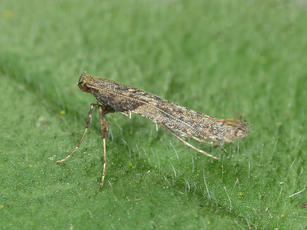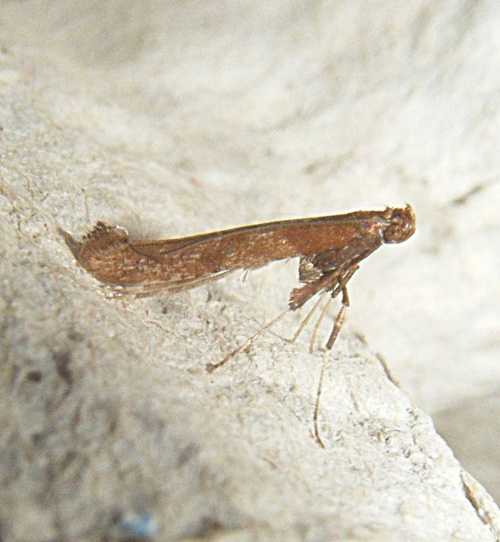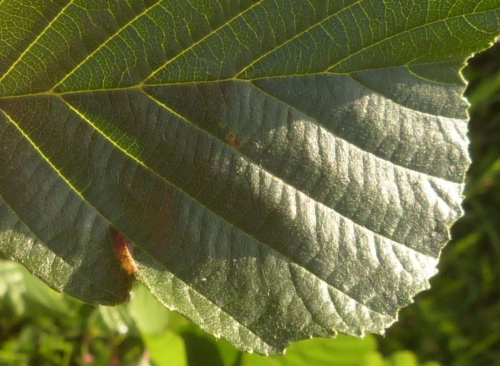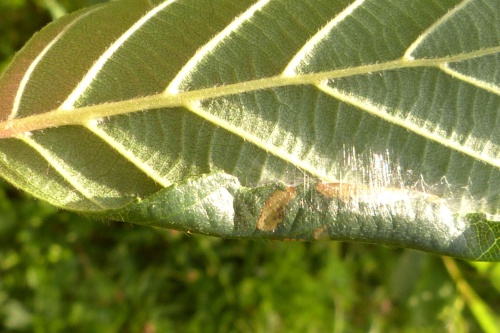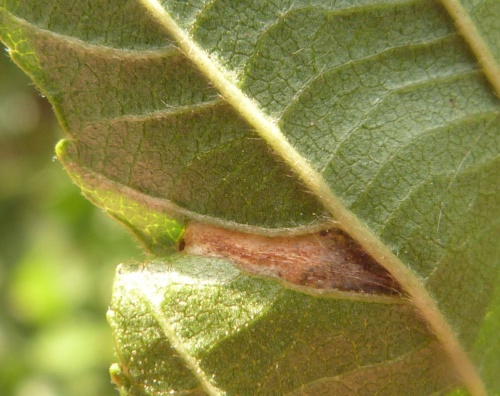Caloptilia falconipennella
Scarce Alder Slender
Wingspan about 13mm.
Areas where alder is present.
The adult moths emerge in September and overwinter in this stage, reappearing in the spring.
The larvae feed on alder, at first mining the leaf and creating a small, tent-like edge mine and then making a small number of folds on the leaf-edge which are 'anchored down' with silken strands. The larva feeds within.
This is a rather rare and local species that is not often observed. Records suggest it has a fairly broad distribution, but is probably overlooked and may be more widespread than is currently known. In the Butterfly Conservation’s Microlepidoptera Report 2011 this species was classified as Nationally Scarce B.
It appears to be uncommon in Leicestershire and Rutland, where there are few records. L&R Moth Group status = D (rare or rarely recorded).
Leicestershire & Rutland Map
Enter a town or village to see local records
MAP KEY:
Yellow squares = NBN records (all known data)
Coloured circles = NatureSpot records: 2020+ | 2015-2019 | pre-2015
UK Map
Species profile
- Common names
- Scarce Alder Slender
- Species group:
- Moths
- Kingdom:
- Animalia
- Order:
- Lepidoptera
- Family:
- Gracillariidae
- Records on NatureSpot:
- 18
- First record:
- 27/03/2011 (Skevington, Mark)
- Last record:
- 19/10/2023 (Graves, Hazel)
Total records by month
% of records within its species group
10km squares with records
The latest images and records displayed below include those awaiting verification checks so we cannot guarantee that every identification is correct. Once accepted, the record displays a green tick.
In the Latest Records section, click on the header to sort A-Z, and again to sort Z-A. Use the header boxes to filter the list.


